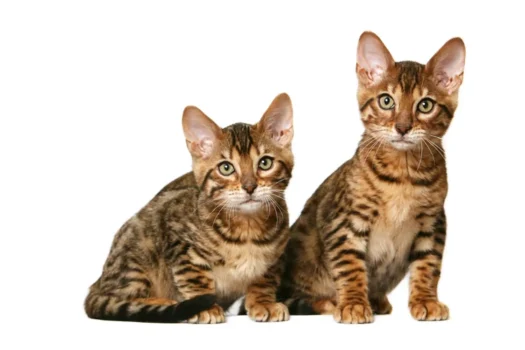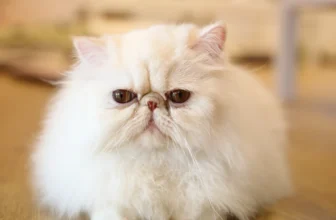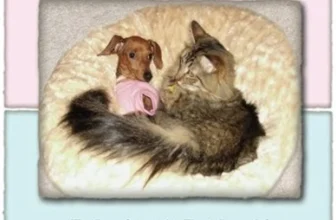Gazing upon the majestic and exotic California Spangled Cat can make anyone wonder about its origins and history. This unique feline breed, once thought to be the epitome of domesticated elegance, has a remarkable story that inspired and awed cat lovers worldwide. Its creation, inspired by the beauty of wild felines, and the handiwork of a passionate and dedicated breeder, took the world by storm, captivating the rich and famous and carving its place in history. In this article, we will delve into the fascinating history and journey of the California Spangled Cat and discover the reasons for its short-lived, yet unforgettable existence.
The Creation of the Breed
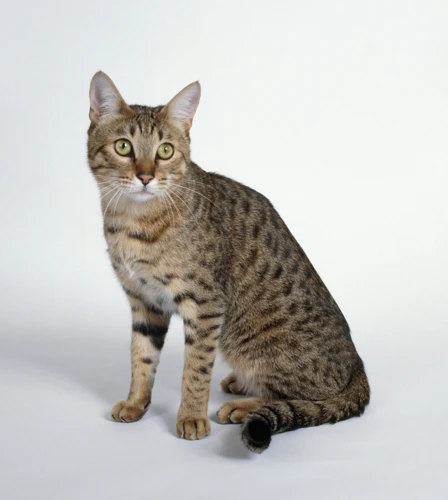
The story of the California Spangled Cat is one of innovation, creativity, and perseverance. This unique breed was created by Paul Casey, a graphic designer and animal lover, who was inspired to develop a domestic cat with a wild and exotic appearance. In this section, we will delve into the fascinating tale of the California Spangled Cat’s creation, including the breeder’s inspiration, the breeding process, and more. So, let’s take a closer look and discover how this remarkable breed came into being.
1.1 The Creator: Paul Casey
Paul Casey was the mastermind behind the creation of the California Spangled Cat breed in the early 1980s. He spent a considerable amount of time researching and studying wild cats, their physical traits, temperament, and genetic makeup. One of the primary reasons why Casey created this breed was to bring attention to the loss of habitat for wild cats in the wild, which were being hunted to near extinction.
Casey’s goal was to produce a domesticated cat that resembled the wild jungle cats he admired. He set out to create a breed that looked just like wild Leopards, but with a friendly disposition. He started crossing numerous breeds, including Abyssinians, American Shorthairs, Siamese, and British Shorthairs. After many years of diligent breeding, Casey finally succeeded in producing the wild-looking cat he had envisioned.
Once the desired traits had been chosen, Casey fine-tuned the genetic pedigree to ensure that the breed would remain as pure as possible. He worked closely with his breeding partners, Elaine and Ken White, to produce extremely high-quality and healthy kittens with distinct coats and vibrant colors. They focused on a specific set of characteristics, such as the coat patterns, ticked fur, and well-muscled bodies.
Throughout his career, Casey gained a reputation for being a dedicated breeder and a true advocate for the feline world. His contributions to cat breeding and conservation have been critical for the development of cat breeds and the preservation of endangered species.
An interesting fact about Paul Casey is that his love for cats was so immense that he decided to foster an abandoned California Spangled Cat named Dharma. Dharma became an inspiration for future breeders of the California Spangled Cat, and she later became a resident at the National Zoo in Washington, D.C. To learn more about Dharma, check out our article dedicated to her story.
| Breed Origin | California, United States |
| Breed Creator | Paul Casey, Elaine and Ken White |
| Appearance | Wild-looking jungle cat with distinct coat patterns, ticked fur, and well-muscled body |
| Personality | Friendly and loyal |
| Weight | 8-15 pounds |
| Coat | Short, thick, and silky |
| Colors | Spotted, ticked, or marbled in shades of gold, bronze, silver, and black |
| Lifespan | 10-15 years |
1.2 The Inspiration Behind the California Spangled Cat
The California Spangled Cat breed was inspired by the plight of wildcats and their struggle to survive in their natural habitat. The creator, Paul Casey, noticed that wildcats were losing their homes, and he wanted to raise awareness about their situation. He believed that by creating a domesticated cat breed that resembled their wild ancestors, people would be more interested in conservation efforts and taking care of the environment. This was the driving force behind the creation of the California Spangled Cat.
To achieve this goal, Casey studied the wildcats of North America and South America. He analyzed their coats, body types, and behavior to determine the ideal qualities of a domesticated cat that would resemble these wildcats. He chose specific breeds to create the California Spangled Cat, including the Siamese, American Shorthair, and British Shorthair.
The coat of the California Spangled Cat was designed to mimic the look of the wild spotted cats like ocelots, jaguars, and leopards. The breed comes in different colors, but the “wild silver” coat was the most popular. This coat is characterized by dark spots, contrasting with a light silver-gray background. The unique coat was highlighted by a specific coat pattern that resembled the letter “M” across the forehead.
The breed’s agility, athleticism, and independence were based on the characteristics of wildcats. They are known to be active and intelligent, making them great companions for owners who are looking for an energetic and playful pet.
The California Spangled Cat breed was inspired by the intention to raise awareness of the wildcats’ situation, while also creating a domesticated cat breed that resembled their wild ancestors. The breed’s distinct features, including its unique coat and agility, were based on the characteristics of wildcats. By owning a California Spangled Cat, people were able to appreciate the beauty of wildcats and possibly develop an interest in conservation efforts. With that said, you can learn more about fostering tips here or consider the conservation of specific breeds in the future by checking out Cali Cat Conservation in the Future.
1.3 The Breeding Process
The breeding process of the California Spangled Cat was an intricate and meticulous process that required careful attention to detail. Paul Casey, the creator of the breed, set out to create a cat that would resemble a wild leopard, but with a friendly and loving temperament suitable for a domesticated cat.
Casey’s breeding process involved the use of several different breeds, including the Abyssinian, Siamese, British Shorthair, American Shorthair, and the Manx. He carefully selected cats that had the desired traits he was looking for, such as a unique spotted coat, athletic build, and friendly personality. He then bred these cats together to create a new breed that would have these characteristics.
To ensure that the kittens produced were healthy and free from genetic disorders, Casey used a rigorous selection process. He would select only the healthiest kittens from each litter to be used in further breeding. This process helped to maintain the health and vigour of the breed, and to eliminate any genetic diseases that may have been present.
Casey’s breeding process was a success, and he was able to create a breed of cat that was not only unique in its appearance, but also friendly, intelligent, and easy to care for. The California Spangled Cat quickly gained popularity among cat lovers, and soon became one of the most sought-after breeds in the country.
A Time of Great Popularity
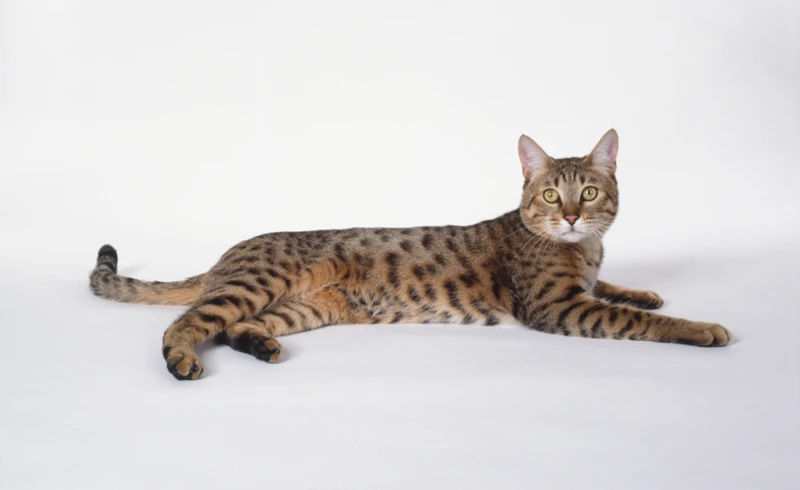
As the California Spangled Cat started to gain attention, it wasn’t long before it became one of the most sought-after breeds in the world. Its unique appearance and charming personality quickly won the hearts of many, making it a status symbol among cat lovers. The California Spangled Cat was not only adored by the general public, but it also caught the eye of many celebrities and even made appearances in Hollywood movies. In this section, we will explore the rise to fame of the California Spangled Cat during its time of great popularity.
2.1 New York Launch and Big Celebrity Endorsements
The California Spangled Cat breed quickly gained immense popularity after its launch in New York, thanks to big celebrity endorsements. The breed was initially introduced in Bloomingdale’s department store, where it immediately caught the attention of shoppers with its unique spotted coat and stunning appearance.
Andy Warhol, a well-known artist, was one of the first celebrities to publicly endorse the California Spangled Cat breed. In 1986, he featured his beloved California Spangled Cat named “Sam” in his diary. Sam was often seen sitting next to Warhol while he worked in his studio and was even photographed by the artist himself for an advertisement campaign featuring the breed.
Another big celebrity endorsement came from President Ronald Reagan and First Lady Nancy Reagan. The couple owned a California Spangled Cat that they named “Cleopatra” and often mentioned her in interviews and public appearances. Cleopatra even made an appearance in the White House Christmas card for 1987, which helped bring even more attention to the breed.
Movie stars also played a significant role in the popularity of the California Spangled Cat. Famous actors such as Anthony Perkins and Natalie Wood were proud owners of the breed. Perkins was seen carrying his California Spangled Cat named “Toby” on the set of his movie “Psycho III,” while Wood was photographed with her California Spangled Cat named “Patch” on several occasions.
The endorsements from these big names in entertainment and politics helped boost the popularity of the California Spangled Cat breed and made it a must-have pet for cat lovers all around the world.
2.2 California Spangled in Hollywood
During the 1980s, the California Spangled Cat gained a lot of attention in Hollywood. With its unique and exotic appearance, many filmmakers and television producers became interested in featuring the breed in their productions.
Here are some examples of California Spangled Cats in Hollywood:
- The California Spangled Cat “Buffy” starred in the 1986 movie “That’s Life!” alongside Jack Lemmon and Julie Andrews. Buffy’s performance gained her significant recognition and even earned her a nomination for a “CATS” movie award.
- In the same year, a California Spangled Cat named “Cat” played a starring role in the music video for Duran Duran’s hit song “Notorious.”
- The breed also made appearances in TV shows, including “Knots Landing” and “Dynasty.”
The California Spangled Cat’s unique appearance made it a sought after companion for many celebrities as well. The breed was owned by the likes of Kim Basinger, Michael Jackson, and Ronald Reagan.
These high-profile appearances in Hollywood helped to further popularize the California Spangled Cat, causing the demand for the breed to skyrocket. Merchandise featuring the breed was also produced and sold, further contributing to its popularity.
2.3 Merchandise and a Booming Demand
The California Spangled Cat’s unique appearance and personality made it a hit with cat lovers across the United States in the 1980s. As a result, the breed’s popularity reached new heights, and the demand for everything related to the California Spangled Cat soared. With this high demand, merchandise items featuring the breed started to appear on the market.
One of the most popular merchandise items featuring the California Spangled Cat was the “California Cuddler” plush toy. Produced by The Love Cat Company, these stuffed toys were fashioned after the real-life California Spangled Cat named “Tabia.” With a $150 price tag in 1987, the California Cuddler was an expensive item at that time, but it became a must-have for owners of these beautiful cats.
In addition to plush toys, there were plenty of other California Spangled Cat-themed merchandise options to choose from. From t-shirts and sweatshirts to handbags and earrings, cat lovers could showcase their love for the breed in a variety of ways. These products played a vital role in solidifying the California Spangled Cat’s popularity, with profits from sales helping to fund the breeding program.
The California Spangled Cat soon became more than just a cat breed; it was a cultural phenomenon. Books and calendars featuring the breed were published, and the cats even made appearances on television shows and in movies. The breed’s unique appearance made them perfect for advertising, and they were used in commercials for products such as cars and soda.
The rising demand for California Spangled Cats and merchandise couldn’t be met, and breeders had long waiting lists for eager buyers. Hundreds of people joined the California Spangled Cat fan club, further cementing the breed’s place in American culture.
However, as the popularity of the breed grew, so did its downfall. The California Spangled Cat was never able to maintain the level of popularity that it had achieved in the 1980s and was replaced by other exotic breeds.
Here’s a table to summarize the California Spangled Cat’s booming merchandise industry in the 1980s:
| Product | Description |
|---|---|
| California Cuddler plush toy | A stuffed toy featuring a real-life California Spangled Cat named “Tabia” |
| T-shirts and sweatshirts | Clothing with California Spangled Cat designs |
| Handbags and earrings | Accessories featuring the breed’s unique appearance |
| Books and calendars | Featuring the California Spangled Cat breed |
| Commercials | Featuring the breed in advertising campaigns |
Despite its brief moment in the spotlight, the California Spangled Cat remains an iconic breed that made a significant impact on the world of feline genetics.
The Demise of the California Spangled Cat
As unfortunate as it is, every story has an end, and the story of the California Spangled Cat is no exception. Despite its initial success and widespread popularity, the breed faced several challenges that eventually led to its demise. In this section, we will explore the factors that caused the downfall of the California Spangled Cat and the legacy it left behind. So, let’s delve into the complex reasons behind the breed’s decline with a heavy heart and a sense of curiosity.
3.1 Decline in Popularity and a Short-Lived Life
The California Spangled Cat did not enjoy a long-lived existence, despite gaining quick popularity. Unfortunately, several factors led to its decline.
Lack of Availability and Price
Initially, the cats were sold at high prices, putting them out of reach for most potential owners. This made them an exclusive luxury item that only the wealthy could afford. As a result, the demand for the breed failed to reach its full potential.
Competition From Other Breeds
The California Spangled Cat faced tough competition from other breeds. With more established breeds already available, it was hard for the California Spangled Cat to establish itself as a mainstay in the industry. The already popular breeds such as the Siamese cat, Persian cat, and Bengal cat made it challenging for a new breed to find a foothold in the market.
Limited Genetic Diversity
There was a limited genetic diversity among the California Spangled Cats, partially due to the small number of breeders. This led to a high concentration of certain genes, which increased the likelihood of inherited disorders and health problems. As the breed gained in popularity, these health problems became more pronounced.
Short Lifespan
Unfortunately, the California Spangled Cat had a relatively short lifespan compared to other breeds, with an average of just 9 years. This was another setback, as people desired cats that would be their companions for many years.
As these factors began to take their toll, demand for the California Spangled Cat fell, leading to a decline in popularity and a short-lived existence for this once-promising breed.
3.2 Lack of Genetic Diversity and Inherited Disorders
Genetic diversity plays a crucial role in the survival and longevity of any breed. Unfortunately, the California Spangled Cat suffered from a notable lack of genetic diversity due to the small gene pool created by its selective breeding process. This led to an increase in the frequency of inherited disorders within the breed.
One of the most common disorders found in California Spangled Cats was hypertrophic cardiomyopathy, which is a heart condition that causes the walls of the heart to become thicker, making it harder for the heart to pump blood. This disorder has genetic roots and can lead to heart failure and even sudden death in some cases.
Another inherited disorder that plagued the breed was progressive retinal atrophy, which caused a degeneration of the retina and eventually led to blindness. This condition was also linked to genetics, and unfortunately, there was no cure available.
With the lack of genetic diversity and these inherited disorders, many breeders struggled to maintain the health and well-being of their California Spangled Cats. As a result, the breed’s popularity began to decline rapidly, and the number of breeders dedicated to the promotion and upkeep of the breed dwindled as well.
It’s important to note that any breed, not just the California Spangled Cat, can suffer from a lack of genetic diversity if breeders are not careful. It’s crucial for breeders to prioritize the health and well-being of their cats and work towards maintaining a diverse gene pool to ensure the breed’s long-term survival.
3.3 The Last Recording of the California Spangled Cat Breed
In 1985, the California Spangled Cat breed was officially recognized by the International Cat Association. Sadly, this recognition came too late as the breed had already started to decline in popularity. The last recording of a purebred California Spangled Cat being born was in 1988.
The End of an Era
Unfortunately, due to their short-lived popularity and decreased demand, the breeding of these cats came to a halt. The decline in the breed’s population can also be attributed to the fact that breeders were not able to maintain genetic diversity which led to various inherited disorders among the cats.
The Legacy Lives On
Although the California Spangled Cat breed is no longer in existence, their legacy has lived on. Their unique coat patterns and agile nature have inspired enthusiasts and breeders alike. There have been efforts to recreate the breed by using other breeds with similar characteristics such as the Bengal and the Savannah, but none have been able to fully capture the original beauty and charm of the California Spangled Cat.
In Conclusion
The California Spangled Cat was a unique and beloved breed that unfortunately did not stand the test of time. Despite their short-lived existence, they have left a lasting impact on the cat world. While it’s sad that they are no longer around, their memory lives on and continues to inspire cat lovers everywhere.
Conclusion
In conclusion, the California Spangled cat was an impressive breed that unfortunately did not remain very long in the world of feline enthusiasts. Despite its alluring good looks and charming personality, the breed was plagued by a lack of genetic diversity that ultimately led to its inception and demise within a relatively short period. The creation of the California Spangled was a passion project for Paul Casey, who put in countless hours of research, cross-breeding, and testing to create the mesmerizing breed that so many cat lovers adored.
During its short life, the California Spangled cat achieved a significant amount of notoriety and popularity. The breed was hailed by major celebrities and featured in prominent publications, including Vogue and Time Magazine. It also managed to make an impact in Hollywood, appearing in several TV shows and movies. However, despite this initial success, the demand for the California Spangled eventually dwindled, and the breed faded into obscurity.
One of the primary reasons for the California Spangled’s decline in popularity was its lack of genetic variation. This issue led to inherited health problems such as heart disease and seizure disorders. Despite attempts to outcross the breed, the damage had already been done, and the breed became unsustainable. Eventually, the last remaining California Spangled cat passed away, and the breed disappeared forever.
Even though the California Spangled’s story ended rather tragically, it still serves as a testament to the beauty and uniqueness of the feline world. It is a reminder that behind every breed, there are stories of love, dedication, and passion for the animals we love. Although the California Spangled was a short-lived breed, its legacy lives on, as it will always be remembered as one of the most alluring and captivating cats that ever existed.
Frequently Asked Questions
1. What makes the California Spangled Cat different from other cat breeds?
The California Spangled cat is known for its unique coat pattern resembling that of a wild leopard, making it stand out among other cat breeds.
2. What is the personality of a California Spangled Cat?
The California Spangled cat is an intelligent and playful breed that loves to interact with humans and other animals. They are also very independent and curious, making them great companions.
3. How long do California Spangled Cats live?
The California Spangled cat has an average lifespan of around 12-14 years, but with proper care and attention, they can live up to 20 years or more.
4. Are California Spangled Cats hypoallergenic?
No, California Spangled Cats are not hypoallergenic. They do produce dander and can cause allergies in some people.
5. How much does a California Spangled Cat cost?
The cost of a California Spangled cat can vary depending on the breeder and location, but on average, they can cost anywhere from $1,000 to $3,000 or more.
6. Are California Spangled Cats good with children?
Yes, California Spangled Cats are known for being good with children. They are friendly and playful, making them great companions for kids.
7. How often should I groom my California Spangled Cat?
You should groom your California Spangled cat at least once a week to prevent matting and hairballs. They also enjoy being brushed, which is a great way to bond with them.
8. Do California Spangled Cats have any health issues?
Due to the small gene pool of the California Spangled cat breed, they are susceptible to inherited disorders such as hip dysplasia and heart disease. It is important to purchase from a reputable breeder that does genetic testing.
9. Are California Spangled Cats good apartment pets?
Yes, California Spangled Cats are great apartment pets as they are not very vocal and are adaptable to different living spaces. However, they do need regular exercise and mental stimulation.
10. Do California Spangled Cats get along with other pets?
Yes, California Spangled Cats are known for being friendly towards other pets and animals. However, it is important to introduce them properly and supervise their interactions, especially with smaller animals such as birds and rodents.

